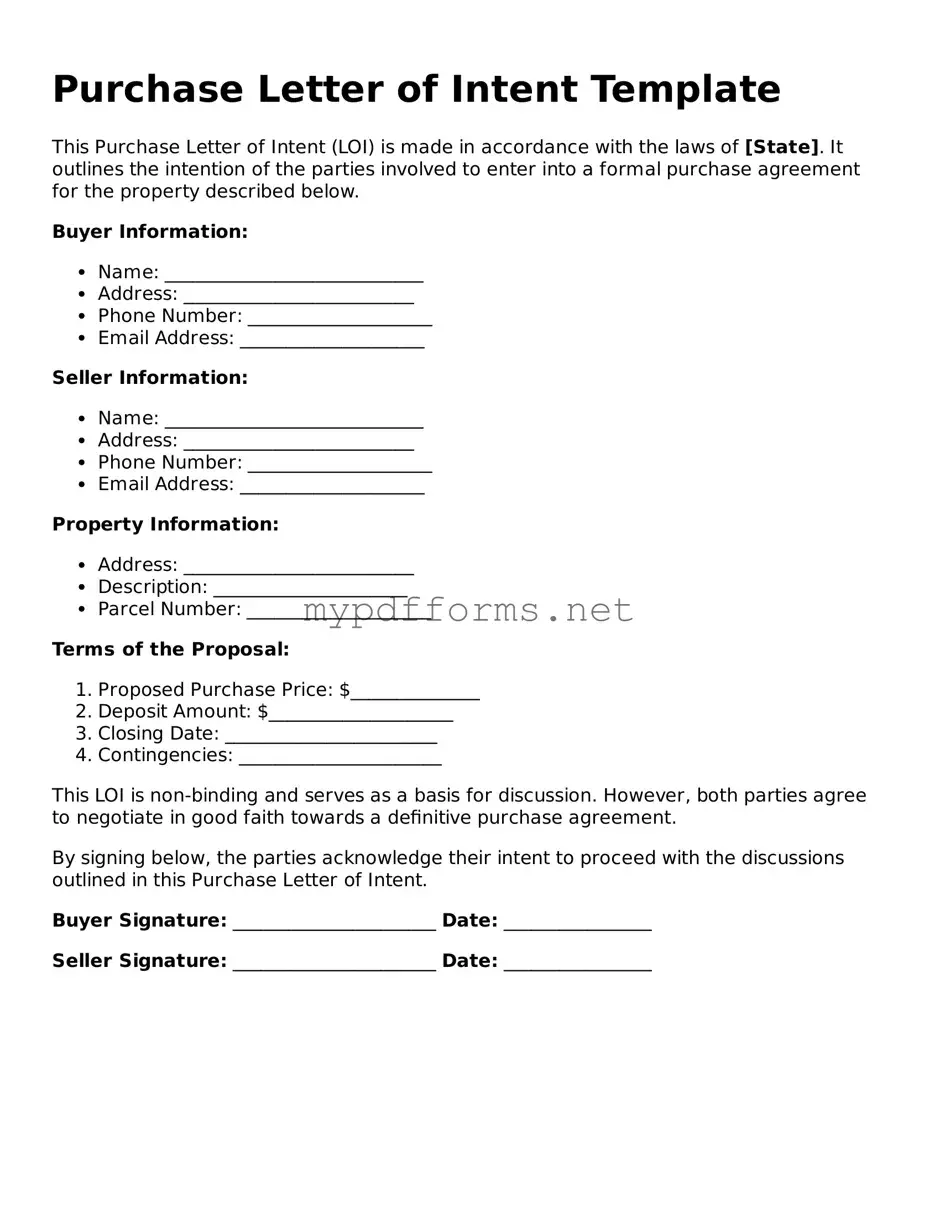When embarking on a significant transaction, such as purchasing a business or real estate, clarity and intent are paramount. A Purchase Letter of Intent (LOI) serves as a crucial document in these negotiations, outlining the preliminary agreement between parties before the final contract is drafted. This form typically includes essential details such as the purchase price, terms of payment, and a timeline for due diligence. Additionally, it often addresses key contingencies that must be met for the deal to proceed, such as financing and inspections. While the LOI is generally non-binding, it establishes a framework for further discussions and demonstrates a serious commitment to the transaction. By clearly articulating the intentions of both the buyer and the seller, this document can help prevent misunderstandings and pave the way for a smoother negotiation process. Understanding the nuances of the Purchase Letter of Intent is vital for anyone involved in a significant purchase, as it sets the stage for what lies ahead.
